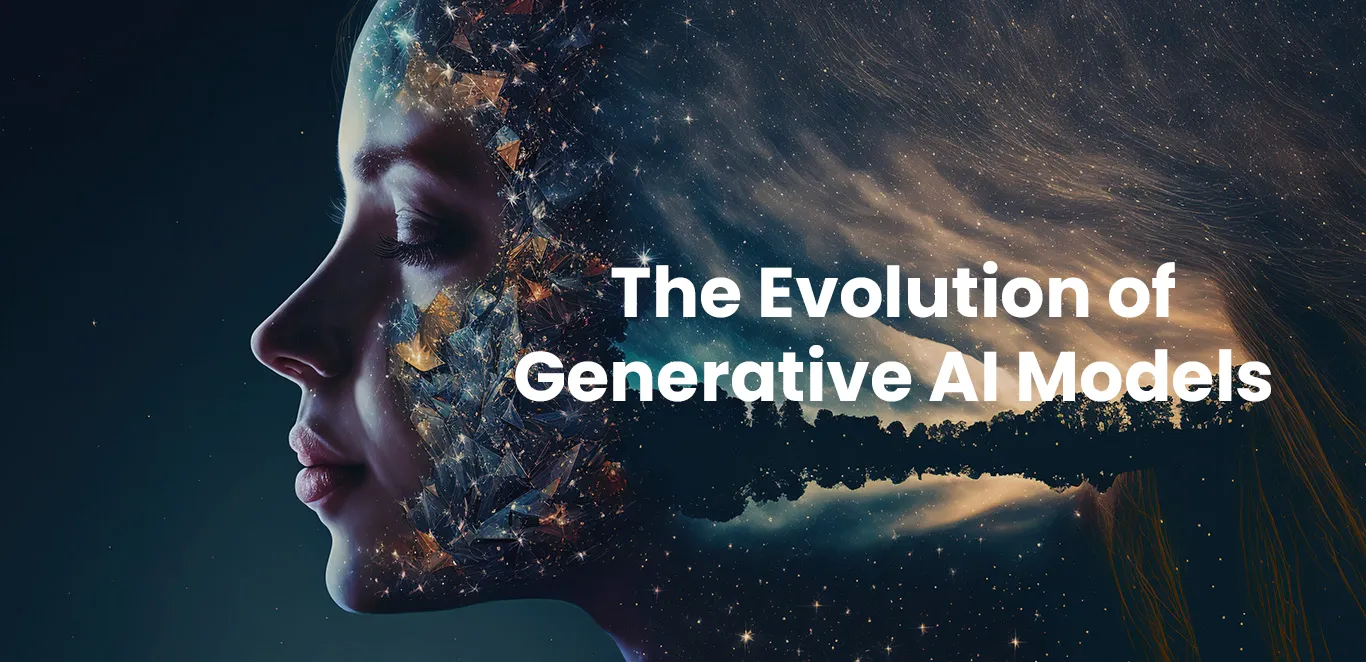The Evolution of Generative AI Models
In the modern technological world, people are looking for tools to do fast and solid work on which organisations can rely. Artificial intelligence tools can come to the rescue, as they work wonderfully by providing maximum efficiency. By using the latest AI tools, you can work rapidly with fewer errors than are usually made by humans. Generative AI is now a trend, gaining more popularity in the modernised world. Because of this, many people are now curious about connected materials and want to learn more about the history and techniques that led to their remarkable performance. AI-generated content (AIGC) aims to improve accessibility and efficiency in the content generation process so that high-quality content can be produced. This blog will describe how AI has developed and changed the technological world. So, continue reading to know more about it.
Evolution of AI
Generative models have a lengthy history in the field of artificial intelligence. They were first developed in the 1950s by creating Gaussian mixture models (GMMs) and hidden Markov models (HMMs). Sequential data, including time series and speech, was produced using these models. The performance of generative models was significantly improved with the introduction of deep learning.
Generative AI models have taken diverse paths as they have arisen in diverse fields, but ultimately, an intersection has been reached: the transformer architecture. Transformer was first presented by Vaswani et al. in 2017 for NLP tasks. It was subsequently used in computer vision and became the primary framework for numerous generative models across various areas.
Advancements in Neural Networks
In the realm of generative AI, the introduction of deep learning represented a momentous shift. Neural networks have become highly effective tools for producing realistic and complex data, including incredibly generative adversarial networks (GANs) and variational autoencoders (VAEs).
GANs: A Modest Improvement
In 2014, Ian Goodfellow and his associates unveiled GANs, a competitive framework between a generator and a discriminator that completely changed the field of generative modelling. The generated text, music, and visuals exhibit a level of realism never before seen in adversarial training methods.
VAEs: Seizing Hidden Space
Another significant development is variational autoencoders, which concentrate on discovering the underlying structure of the input data. VAEs allow the creation of new data points with customisable properties by capturing the latent space.
Utilisations in All Sectors
Algorithms can now create breathtaking visual artworks, musical compositions, and even literary works, thanks to artificial intelligence (AI). AI systems are currently used in collaboration with artists and creators to explore new avenues for expression.
Medical Care and Drug
Development Generative models are being used in medicine to mimic biological processes and create molecular structures for medication discovery. These models quicken the pace of research and provide fresh perspectives on challenging medical issues.
Amusement and Video Games
The entertainment sector has widely adopted generative AI for procedural environment building in video games, character development, and content creation. These models provide infinite possibilities for game development and improve gameplay experiences.
Future Considerations
Deep-generative AI models utilising neural networks have dominated the machine learning space for the past ten years. This tendency is particularly evident in natural language understanding, where numerous parameter models like BERT and GPT-3 have been established. Moreover, practical application in the actual world is improved by the growing model footprint and complexity, as well as the expense and resources needed for training and deployment.
Thanks to prompt learning, the language models can be retrained on vast amounts of unprocessed text input and adapted to new domains without being tuned anew. Similarly, model compression is valuable for lowering model size and raising computation efficiency.
Summing it up
This blog has given all the significant information about AI models and how they innovate new things and easily create the present stuff. From simple algorithms to complex neural networks, generative models have come a long way, enabling us to generate realistic images, music, text, and more.
To get knowledge about everything and the best access to the AI models, you can connect with Nettfy Technologies. One thing is certain as we negotiate the difficulties and opportunities that lie ahead: the development of generative AI is far from finished, and the possibilities are virtually limitless. AI-generated content (AIGC) seeks to increase content-generating efficiency and accessibility so that high-quality material can accelerate your company’s growth.


